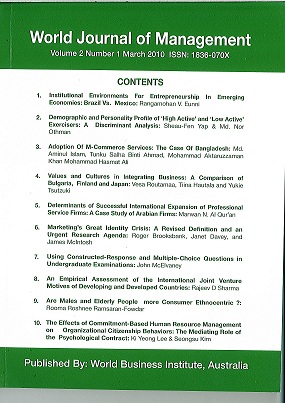March
2017

March 2017 (World Journal of Management)
Total Articles - 14
